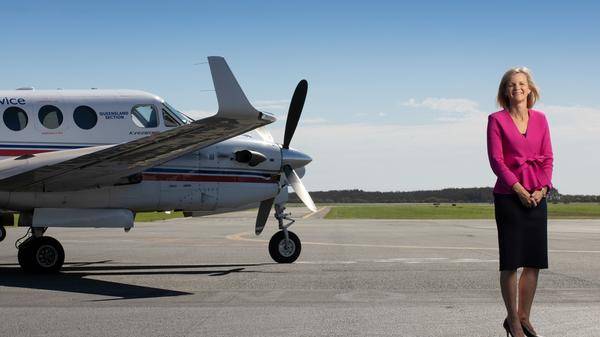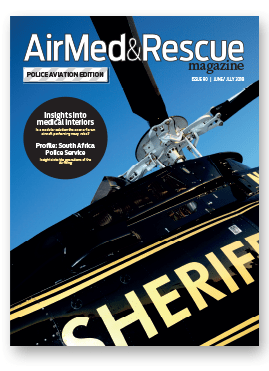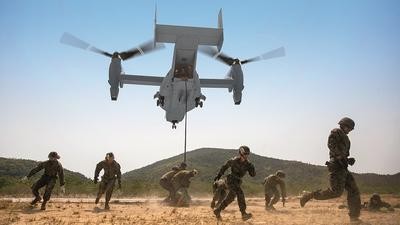Interview: Meredith Staib, CEO of Royal Flying Doctors Service Queensland

AirMed&Rescue spoke to Meredith Staib, CEO of the Royal Flying Doctors (RFDS) Queensland Section, about joining an iconic Australian organisation and embracing new technology to ensure a sustainable future
You’ve been working for the RFDS since mid-2018; what first attracted you to the organisation?
The RFDS has always appealed to me. It’s such an iconic and trusted Australian brand with a long, proud history. When I started my career as a registered nurse, I conducted emergency retrievals and got to know and admire what the RFDS does for people in remote and rural Australia. I saw an organisation that aligned with my own values and desire to make a difference in the world. Of course, back then, I never imagined that one day I’d be in a position to influence the organisation’s future. Instead, I pursued a career in international medical assistance and loved it. One of my highlights was leading the retrieval team who flew into Nepal to retrieve customers impacted by the earthquakes in 2015. With RFDS, I feel like I’ve come home to use this experience and passion to help Queenslanders, and I feel very privileged and honoured to be here.
What has your experience in the international medical assistance business allowed you to bring to your new role with the RFDS?
I have clinical experience, which helps me understand the business and operational needs, and also means I keep the people at the receiving end of our service in mind. Over 15 years’ experience in the business of international medical assistance also means that I’m no stranger to the challenges of combining health and aviation. Before the RFDS, I was CEO of World Travel Protection (WTP), which is Zurich’s Global International Emergency Medical Assistance business. WTP coordinates urgent medical care and repatriations for travellers in over 200 countries. This means I’m used to leading people who are the best at what they do in health and aviation across large distances. I’m skilled at working with a diverse and geographically-dispersed workforce that delivers its service across multiple operational platforms. Lastly, I come from a sector that has embraced technology to improve its service delivery, and I have significant experience in championing the introduction and use of new technologies.

What does the role of CEO involve on a day-to-day basis?
Day to day it’s never the same! But you can guarantee that I’m learning and understanding more about the business every day. As I’m responsible for driving the strategy for the business, which we’ve called ‘Towards 100: Getting future ready’, I am always on the lookout for ways to future-proof our business and respond to many challenges in our environment. Our strategy is focused first and foremost on our people, as well as innovation to sustain and fund operational excellence.
On a day-to-day basis, I collaborate with different stakeholders and our partners who help us deliver health care to the furthest corner of Queensland. Plus, I’m in regular contact with my counterparts in the rest of Australia to share ideas and problem-solve challenges.
Risk management is an important part of my day to day. I hold the AOC licence for the business with the Head of Flying operations, so ensuring we’ve an appropriate risk management process in place is a daily part of my role.
RFDS QLD has been pushing hard for innovation in healthcare technology, starting its Drones in Healthcare Think Tank in April, as well as other initiatives. Why is this such an important part of the organisation’s work?
The RFDS was started by Reverend John Flynn just over 90 years ago to provide ‘a mantle of safety for the people of outback Australia’. He was a true innovator before we were all talking about it. I feel acutely responsible for carrying on his vision.
Part of the reason I’m so passionate about pushing innovation is that I have seen the success of doing this in my previous work and because I strongly believe it’s key to future-proofing the RFDS and making sure that we’re still around for another 90 years and more.
Our Drones in Healthcare Think Thank, which was created in partnership with World of Drones Education at Queensland University of Technology, brought together some of the best and most experienced minds in unmanned aerial vehicles to discuss how this technology could be used in the future to help us to overcome the tyranny of distance. We found that the possibilities for this kind of technology to supplement the great work that we already do were endless.
Potentially with drones, we could deliver blood, vaccines, antivenom and other medical supplies to remote and rural areas – either to hospitals, our team or directly to the injured or sick person, their workmate or family member. In some circumstances with a drone, we could reach people who need help faster and offer them initial assistance or assess them before a team flies out. This has the potential to make a significant difference to our service delivery model.
In general, if you think of how far we’ve come in healthcare with the use of technology – from telemedicine to wearable devices to AI – you can also see there’s enormous potential and I think our next decade will be defined by great change. We need to ensure the RFDS is at the forefront of that change in every part of our organisation.

Your HALO program was recently the recipient of the Australian Information Industry Association iAward and Australia Computer Science Gold Disruptor Award for NFP; could you tell us more details about the program, and the difference it is making to the care delivered by RFDS?
HALO stands for Health, Aviation and Logistics Online. It’s a new multifunctional digital platform, which was created for the RFDS to address an ongoing issue we had. Previously, clinicians were documenting important clinical data on paper, which was later manually entered into a secure database. The delay and inefficiency in transposing hand-written notes was leading to an unacceptable error rate. We also had an ‘integration problem’ because of poor data transfer between the various ICT systems.
Today, HALO helps our team deliver services more effectively business-wide. We can use it to effectively log staff activity; match and dispatch teams in accordance with patient needs; simply and easily record diagnosis, observations, treatments and interventions; and complete and record safety checks and inspections. The system also integrates with a wide range of current and legacy systems. All of which means we can demonstrate compliance with legislative requirements and best practice.
For the people we’re looking after, it means they get the help they need faster, and we have accurate clinical information to work with. The system is intuitive, and this frees up our clinicians so they can give Queenslanders greater levels of direct care.
Training of medical personnel is another area where technology is improving learning; what has the RFDS done in this regard, and what are the plans for the future?
Yes, this is really exciting! At RFDS, we maximise technology and innovation when it comes to clinical training. I’ll give you an example. We have just opened a new, state-of-the-art training facility at our Brisbane base, called the Traeger Clinical Innovation and Learning Centre, which our teams across Queensland can use via remote access. The facility uses immersive technology, which transports our team to any of our nine bases, any hospital around Queensland, paddock, or anywhere they may find themselves when they’re out and about on the job. We achieve this simulated learning environment through projectors, surround sound and interactive sensors.
We also have an incredible high-fidelity mannequin that can interact with and react to our clinicians to really suspend their disbelief and make our training scenarios as realistic as possible. This is so important because the work that we do is so wide-ranging. Our clinicians have to be fully prepared for hundreds of challenging and complex scenarios. They have to be the best at what they do and using technology, we can train them to the highest standard.
We also plan to roll out a suite of these training facilities across the state so remote staff will have equal access to training, without taking time away from their base and their families.
The other technology we’re implementing is virtual reality (VR). We’re in the process of rolling out the technology that will allow our staff to train virtually on vital pieces of equipment like the Hamilton Ventilator, even if they don’t have access to it where they are based. This allows staff to train on expensive and complicated pieces of kit, without us having to take the equipment out of action. Eventually, we also hope to use VR to run simultaneous training sessions across the state allowing people to train with their colleagues, no matter where they are.
Just like Flynn and his invention of the pedal radio, we’re working hard to innovate and overcome the tyranny of distance. My next step for this innovation is using VR in other areas of our business for training such as in engineering.

Medical outreach programmes are a key part of what the RFDS does, bringing healthcare to remote aboriginal communities; what are the main challenges that are faced in delivering care to these communities, and how has telemedicine changed the way in which medical assistance can be delivered to remote areas?
Roughly 46 per cent of the people we care for are Aboriginal and Torres Strait Islander people. As part of our commitment to helping improve health outcomes and access to services for them, RFDS’ research and policy team published a report that made aeromedical retrieval data available for the first time in 2016. This helped to provide evidence around the main illnesses and injuries impacting remote Aboriginal communities. It also reinforced that holistic and collaborative health approaches, established with the community, lead to better outcomes. We continue to build on this knowledge.
The RFDS is not just an aeromedical business. We provide 25,000 primary healthcare consultations across Australia each year and we deliver care, such as our mobile dental service, in places where there are no local services. Our care reaches some of the most remote communities in Australia. We know that Aboriginal and Torres Strait Islanders’ decisions about when and why to seek health services and the success of education programmes are strongly influenced by culture. Our challenges include how to review the cultural responsiveness of our services and programmes and how to keep building the capability of our workforce, so we provide culturally appropriate healthcare.
Our telemedicine service is a 24-hour medical consultant service via phone and radio for people in remote Queensland locations. Through this service, we provide advice to rural doctors, nurses and Aboriginal and Torres Strait Islander health workers. Used in conjunction with the RFDS Medical Chests, this means patients can be sometimes be treated without having to travel hours for medical attention.
While telemedicine has enhanced the RFDS’ delivery model, we can see there is still a strong need in communities for on-the-ground support and for our clinicians to be seen as part of the community. We hear time and time again how much people value the face-to-face model, and how it can help to prevent more serious health conditions.

What is your vision for the future of the RFDS QLD? Is there a way to future-proof such an iconic piece of Australian heritage?
Yes, I strongly believe so! We’ve got a dedicated team that is certainly working hard to do so. Sustainability is a big focus of mine, not just for funding, but for recruitment, staff wellbeing and all other areas of the organisation.
Key to achieving sustainability is having a great overall strategy. When I joined, the organisation had just formalised a five-year strategy, and we’ve just started on that journey. But my experience of strategy is that you can’t ‘set and forget’. You should be reviewing your strategy every six months because things change. It could be technology, it could be people, it could be regulations. You need to be ahead of the game strategically. It’s also important to check in with people regularly, to align their work to the wider strategy. Then every year, our board has an offsite strategic board meeting in one of our nine Queensland bases. This year we’re going to Cairns and again, that’s to review the strategy. To ask are we still on track? Is it still right for the business?
I always keep in mind Flynn’s words – ‘if you start something worthwhile, nothing can stop it’, so I’m filled with optimism about the future of the RFDS Queensland and our ability to continue to care for the people of Queensland.

June 2018
Issue
Mandy Langfield
Mandy Langfield is Director of Publishing for Voyageur Publishing & Events. She was Editor of AirMed&Rescue from December 2017 until April 2021. Her favourite helicopter is the Chinook, having grown up near an RAF training ground!
